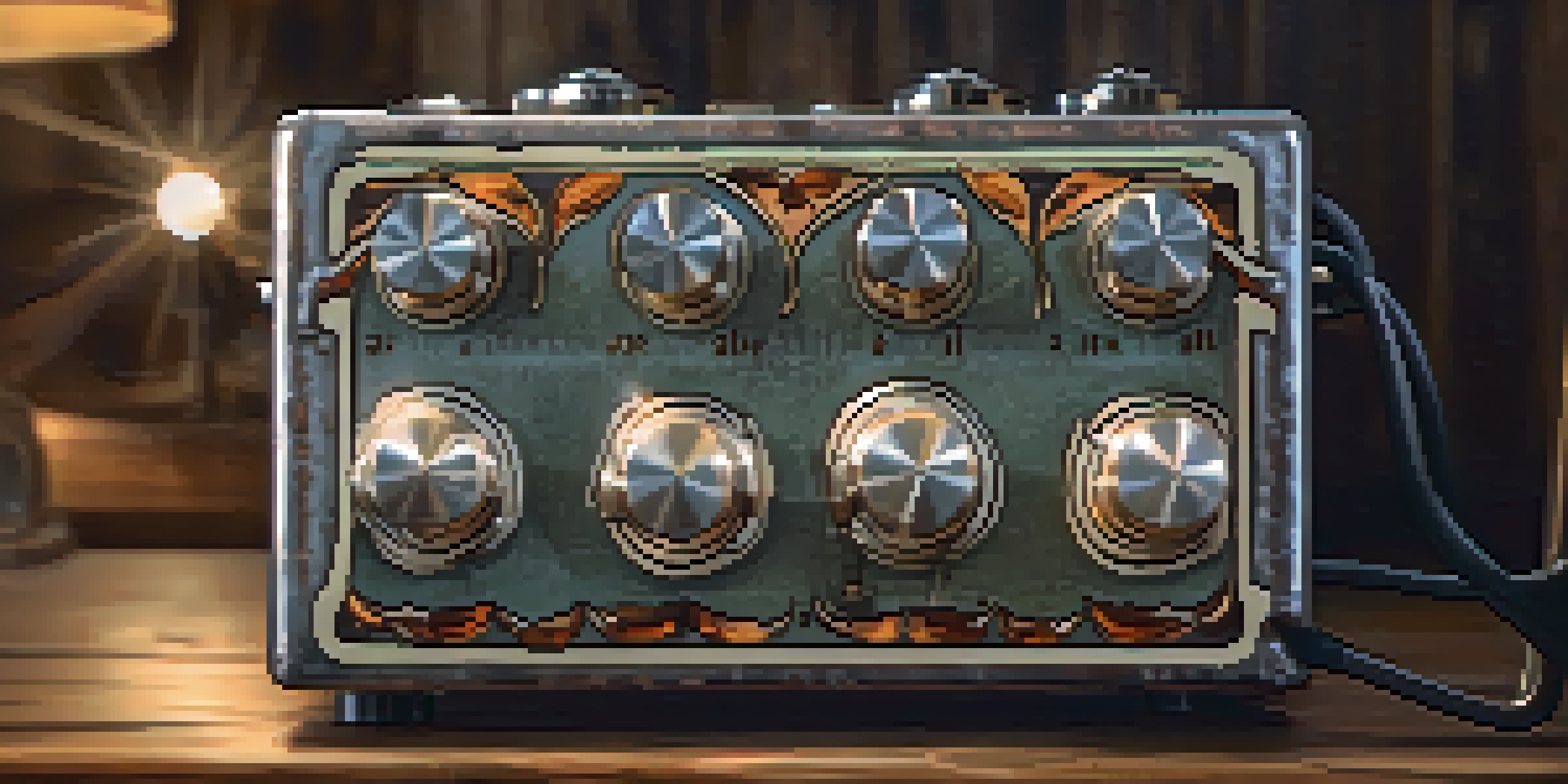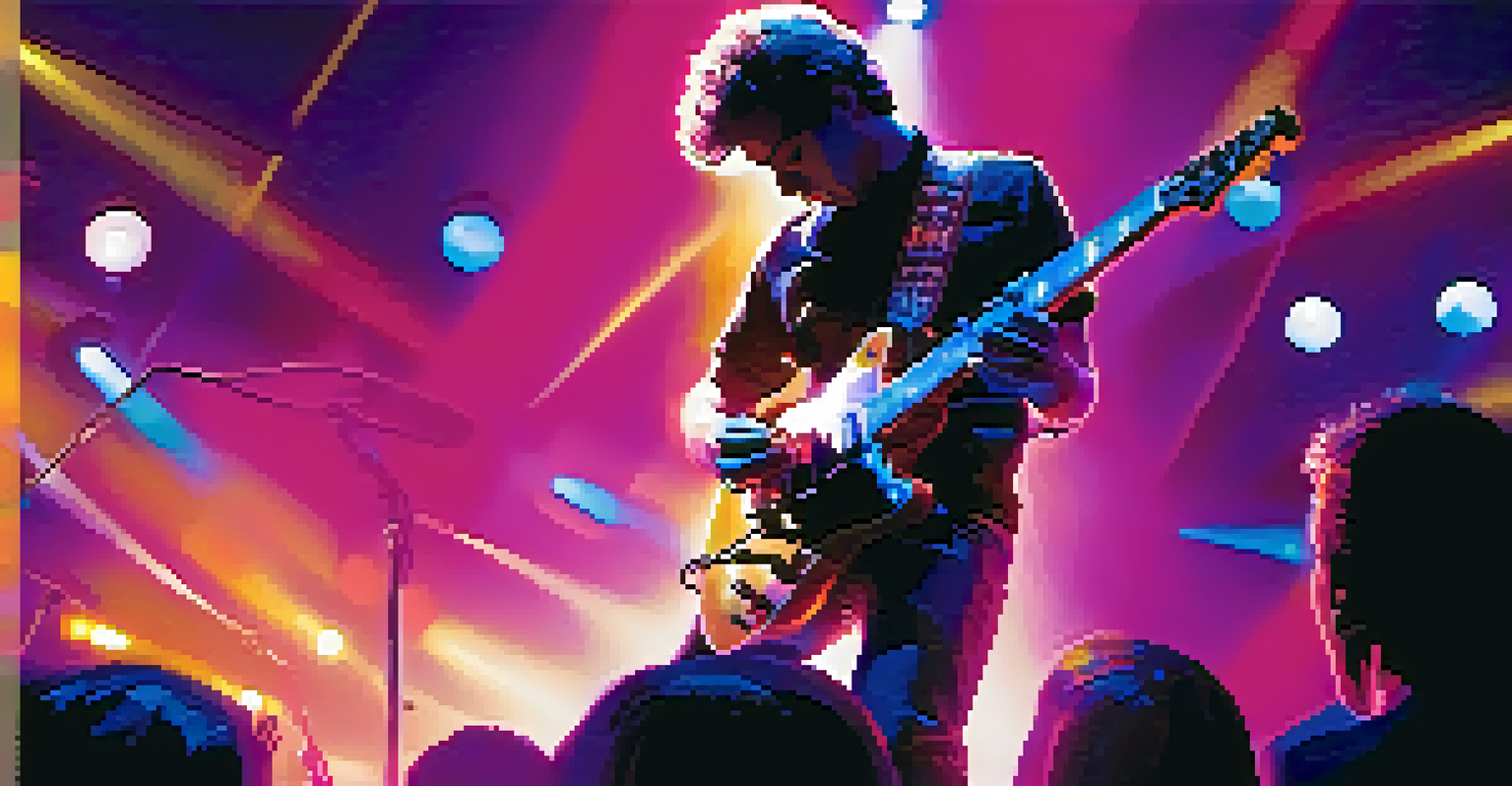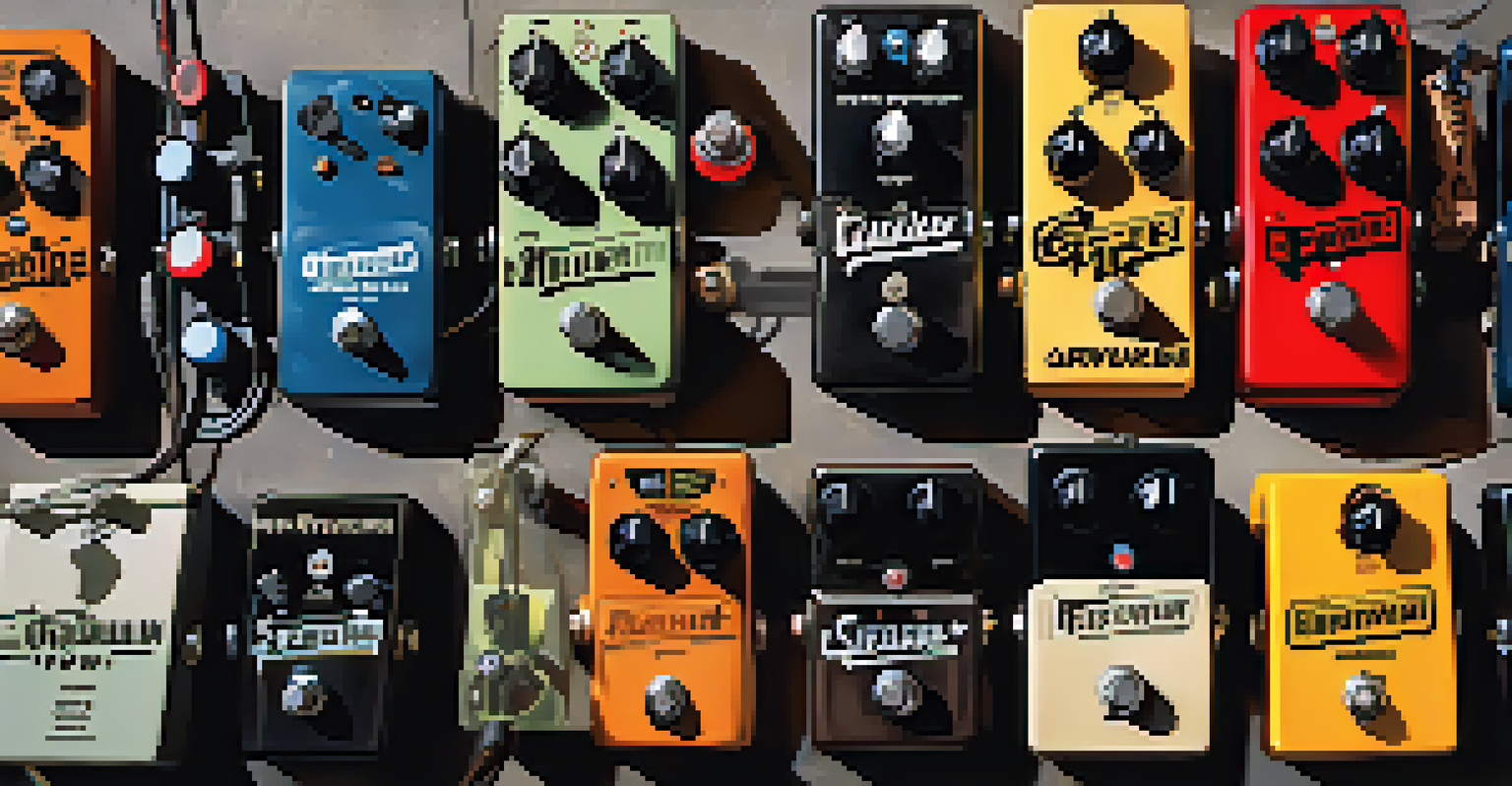Overdrive vs Distortion: Which Pedal Should You Choose?

Understanding Overdrive and Distortion Pedals
Overdrive and distortion pedals are essential tools for guitarists, often used interchangeably, but they produce distinct sounds. Overdrive mimics the warm and natural saturation of a tube amplifier pushed to its limits, while distortion offers a more aggressive and heavier tone. Think of overdrive as the smooth, velvety chocolate cake, whereas distortion is more like a rich, dark chocolate mousse—both delicious but with very different characteristics.
Music is the shorthand of emotion.
When you engage an overdrive pedal, it enhances your guitar's signal, bringing out the harmonics without overwhelming the original tone. In contrast, distortion pedals alter the waveform, creating a more powerful and sustained sound that can dominate a mix. Each pedal has its own unique flavor that can complement your style, so understanding these differences is key to making the right choice.
Ultimately, the choice between overdrive and distortion comes down to personal preference and the sound you're aiming for. Whether you want to add a bit of grit to your clean sound or go all-out for a heavy rock tone, knowing how each pedal functions will help you achieve your desired musical expression.
How Overdrive Pedals Work and Their Benefits
Overdrive pedals work by clipping the audio signal, which adds harmonic distortion and warmth. This effect is typically achieved at lower volumes, allowing for a smooth transition from clean to overdriven tones. Guitarists often favor overdrive for its ability to enhance dynamic playing, responding beautifully to how hard you strum or pick.

One of the main benefits of using an overdrive pedal is its versatility. You can use it to boost a clean tone or to add a touch of grit to an already distorted sound. This makes it a favorite among blues and rock guitarists looking to create a rich, expressive tone without sacrificing clarity.
Overdrive vs. Distortion Sounds
Overdrive pedals create a warm, smooth tone, while distortion pedals produce a more aggressive and pronounced sound.
Additionally, overdrive pedals can work well with various other effects, like delay and reverb, allowing you to build a lush soundscape. Whether you're playing rhythm or lead, an overdrive pedal can help you achieve a more nuanced and dynamic performance.
Exploring Distortion Pedals and Their Characteristics
Distortion pedals create a more aggressive sound by heavily modifying the input signal, resulting in a pronounced crunch that’s perfect for heavier genres. They often feature more gain than overdrive pedals, which allows for sustained notes and powerful solos that cut through the mix. If overdrive is a gentle push, distortion is a full-on shove.
The beautiful thing about learning is that no one can take it away from you.
One of the standout characteristics of distortion pedals is their ability to produce a wide range of tones, from smooth and creamy to harsh and biting. This makes them incredibly popular in genres like metal, punk, and hard rock, where a razor-sharp attack is often desired. With the right settings, a distortion pedal can help you achieve everything from classic rock riffs to modern metal chugging.
Moreover, distortion pedals often come equipped with tone-shaping controls, allowing players to tailor their sound further. This means you can dial in the perfect amount of treble and bass to suit your playing style and the overall mix of your band.
Key Differences Between Overdrive and Distortion
While both overdrive and distortion pedals can create rich, textured sounds, the key differences lie in their tonal characteristics and how they interact with your guitar. Overdrive pedals tend to produce a smoother and warmer sound, while distortion pedals provide a more aggressive and pronounced effect. This distinction can significantly influence your playing style and the genres you find yourself exploring.
Another difference is the amount of gain each pedal typically provides. Overdrive pedals are often designed to add just enough grit to enhance your tone, whereas distortion pedals can take your signal to much higher gain levels. This can result in a more sustained sound that’s ideal for solos but may overshadow your clean tones.
Choose Based on Music Style
The choice between overdrive and distortion often depends on the genres you play, with overdrive suited for blues and rock, and distortion favored in metal and punk.
Understanding these differences will help you choose the right pedal for your musical needs. If you’re looking for warmth and subtlety, an overdrive might be your best bet, but if you want to dive headfirst into heavy riffs, distortion is the way to go.
Choosing the Right Pedal for Your Music Style
The decision between overdrive and distortion often depends on the music style you play. For blues, classic rock, or country, overdrive is typically favored for its ability to enhance the natural tone of the guitar. On the other hand, if you’re into grunge, metal, or punk, distortion pedals are likely to be your go-to for that heavier, more aggressive sound.
Consider how you want to use the pedal in your setup. If you're looking for a pedal that can boost your clean tone and provide a bit of edge during solos, overdrive is a solid choice. If you’re aiming for a full-on, crushing tone that dominates the mix, distortion will likely serve you better.
Ultimately, it’s a good idea to experiment with both types of pedals to see which one resonates with your style. Many musicians find that having both in their arsenal allows for a broader range of sounds and expressions.
The Importance of Testing Before Buying
When it comes to choosing between overdrive and distortion, testing pedals in person can make all the difference. Every pedal has its own unique characteristics, and how it interacts with your guitar and amp is crucial. Visiting a music store and trying out different models will help you find the one that suits your sound best.
Pay attention to how each pedal responds to your playing dynamics. Some pedals might sound great at a certain setting but lose clarity or punch when you adjust the gain. Take your time to explore the tonal range and how each pedal can be shaped to fit your style.
Test Before You Buy
Testing pedals in person is crucial as each has unique characteristics that interact differently with your guitar and amp.
Additionally, don’t hesitate to ask for advice from knowledgeable staff or fellow musicians. They can often provide insights about which pedals work best for specific genres or playing styles, helping you make a more informed decision.
Final Thoughts: Finding Your Signature Sound
Choosing between overdrive and distortion pedals ultimately comes down to finding the sound that feels right for you. Both types of pedals offer unique tonal possibilities and can significantly enhance your guitar playing. By understanding the differences and experimenting with various options, you’ll be on your way to discovering your signature sound.
Consider your musical influences and what tone resonates with you the most. Whether you lean towards the smooth, warm characteristics of overdrive or the edgy, powerful sound of distortion, there's no right or wrong choice—just the sound that inspires you.

Remember, the journey of finding your sound is part of what makes music so enjoyable. So, take your time, explore, and have fun as you find the perfect pedal to enhance your musical expression.